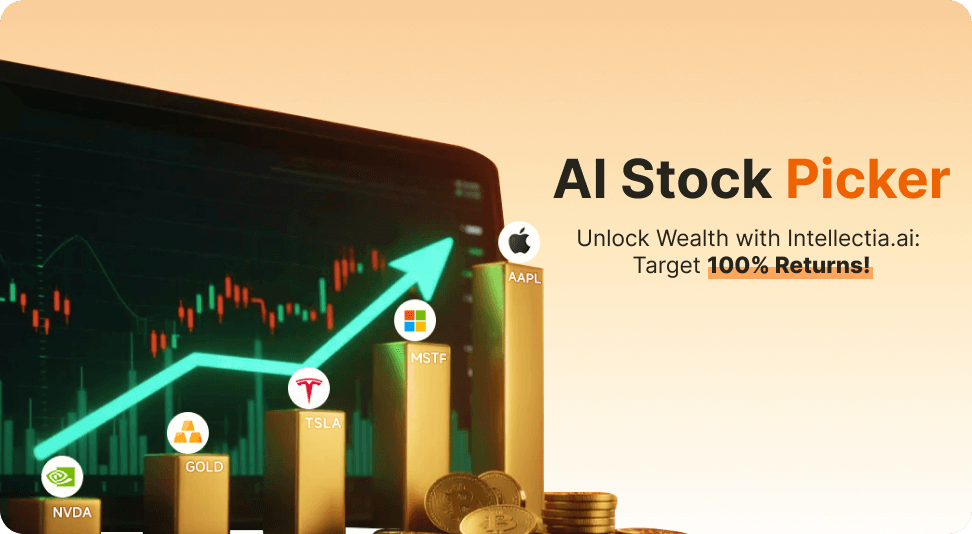Key Takeaways
- Historically, the S&P 500 has averaged a long-term annual return of about 10% after adjusting for inflation.
- Technology companies make up more than 43% of the S&P 500. Investors expect these well-known technology companies to grow and bring richer returns with the development of AI.
- Analysts from Goldman Sachs and Morgan Stanley forecast the S&P 500 would rise to 6,500 by the end of 2025, which means that the total return rate will reach 10% yoy.
- There are three common ways to invest in the S&P 500. Investing in a stock within the S&P 500 index, investing in S&P 500 index funds, or S&P 500 index ETFs.
Introduction
For beginners, investing in the Standard & Poor's 500 (S&P 500) Index is much safer than buying individual stocks directly. Because it includes 500 of the top US-listed stocks, it allows you to avoid losses caused by the decline of a single stock or industry.
I used to be a stock trader, and I also had rich experience in investing in Index funds. working at a large mutual fund. People ask me some similar questions: What is the best way to invest in the S&P 500? Should I invest in an index fund or ETF? What's the difference between them?
If you are a beginner and are looking for answers to these questions, I strongly recommend you read this guide before you start investing. It can help you understand which way of investing you are better suited for.

What is the S&P 500?
Founded in 1957, the S&P 500 Index is a well-known global stock market index and is also seen as a barometer of the health of the U.S. stock market.
The S&P 500 index tracks the performance of 500 leading U.S. companies. Many of the world's most famous companies are in the S&P 500 index, such as Nvidia, Microsoft, Apple, Google, Tesla, and many others.
However, the S&P 500 index does not consist of an exact 500 stocks. Sometimes, the same company may issue several different types of shares (such as common and preferred shares) that are counted separately in the index.
Why investors choose to invest in the S&P 500
The S&P 500 index is the top investment choice for many people, and there are several reasons why.
Broad Market Exposure
The S&P 500 index accounts for approximately 80% of the total U.S. stock market capitalization, giving investors exposure to a wide range of industries, including technology, financials, and industrials. Investing in the index means building an extremely diversified portfolio all at once, thus reducing the risk to investors.
Low Costs
Index funds and ETFs that track the S&P 500, such as the Vanguard 500 Index Fund (VFIAX) or SPDR S&P 500 Index ETF (SPY), have a lower expense ratio. Therefore, it is an attractive investment option among many investors looking for lower-risk, lower-cost investment opportunities.
Historical Performance
Historically, the S&P 500 has averaged a long-term annual return of about 10% after adjusting for inflation. This steady performance is an attractive option for investors looking for reliable growth potential.
Technology Drives Index Growth
Technology companies are known for their potential for high returns on investment. Technology companies make up more than 43% of the S&P 500. Of the top 10 companies in the index, most are technology companies, such as Apple (AAPL), Microsoft (MSFT), Nvidia (NVDA), Google (GOOG), and Broadcom (AVGO).

With the development of AI, these well-known technology companies are expected to grow and bring even richer returns to investors.
S&P 500 Performance: Past and Future
Many academics are tracking the returns of the S&P 500, and Aswath Damodaran, a professor at New York University, is one of them. According to data compiled by Aswath Damodaran, over the 10 years ending December 2024, the average annual return of the S&P 500 index was 13.3% (including dividends).
The data also show that the S&P 500's average annual return of more than 10% has outperformed many other investments, including U.S. treasury bonds, corporate bonds, real estate, and gold.
Year | S&P 500 (includes dividends) | 3-month T.Bill | US T. Bond (10-year) | Baa Corporate Bond | Real Estate | Gold |
2015 | 1.38% | 0.05% | 1.28% | -1.50% | 5.19% | 12.11% |
2016 | 11.77% | 0.32% | 0.69% | 11.52% | 5.31% | 8.10% |
2017 | 21.61% | 0.93% | 2.80% | 9.23% | 6.21% | 12.66% |
2018 | -4.23% | 1.94% | -0.02% | -3.27% | 4.52% | 0.93% |
2019 | 31.21% | 2.06% | 9.64% | 15.25% | 3.69% | 19.08% |
2020 | 18.02% | 0.35% | 11.33% | 10.60% | 10.43% | 24.17% |
2021 | 28.47% | 0.05% | -4.42% | 0.93% | 18.86% | -3.75% |
2022 | -18.04% | 2.02% | -17.83% | -15.14% | 5.65% | 0.55% |
2023 | 26.06% | 5.07% | 3.88% | 8.74% | 5.68% | 13.26% |
2024 | 24.88% | 4.97% | -1.64% | 1.74% | 4.24% | 25.96% |
Average | 14.11% | 1.78% | 0.57% | 3.81% | 6.98% | 11.31% |
Now, many analysts have forecasted that the S&P 500 will continue to rise in 2025. As of January 2025, Goldman Sachs and Morgan Stanley both forecast that the S&P 500 would rise to 6,500 by the end of 2025, which means that the total return rate, including dividends, will reach 10%.
David Kostin, chief U.S. equity strategist at Goldman Sachs, mentioned in the report that the reasons for bullishness include the solid expansion of the U.S. economy and the steady growth of corporate profits.
A JPMorgan research note makes a similar point. Dubravko Lakos-Bujas, head of global markets strategy at JPMorgan, noted that in 2025, the United States is likely to continue to be the engine of global growth because its economic cycle is in an expansionary state.
Lakos-Bujas also expects the S&P 500 to reach 6,500 in 2025, with the U.S. equities preferred over the eurozone and emerging markets.
Best way to invest in the S&P 500 for beginners
For beginners, the best way to invest in the S&P 500 is through a mutual fund or ETF, which is a safer choice than investing in a stock within the S&P 500 index.
Investing in an S&P 500 index fund or ETF means that you will invest in all industries and stocks within the index. You can significantly diversify your funds and risks and minimize the impact of market fluctuations. So for beginners, choosing mutual funds or ETFs is a better choice.
Based on my experience, I suggest you look at the following criteria when choosing a mutual fund or ETF.
- Expense ratio: Mutual funds typically charge lower fees than actively managed funds, Because they are passively managed, their goal is to match the performance of the index rather than beat it. ETFs also have a low expense ratio, which is often between 0.03% and 0.1% annually.
- Dividend yield: Many S&P 500 index funds or ETFs pay dividends, which can be reinvested and boost your long-term returns. But there are a few that don't, and you need to be aware of that before you invest.
- Minimum Investment: Mutual funds generally have minimum investment amounts ranging from a few hundred dollars to several thousand dollars. For example, a Vanguard 500 Index fund (VFIAX) typically has a minimum investment of $3,000. In contrast, ETFs have a lower minimum investment than mutual funds or even no minimum investment.
- Liquidity: ETFs have better liquidity and flexibility than mutual funds. Because ETFs can be traded on stock exchanges like ordinary stocks, while other funds can only be settled at the end of the trading day.
| Mutual funds | ETFs |
Expense ratio | Low | Low (often between 0.03%-0.1% per year) |
Dividend yield | Most of them, Yes | Most of them, Yes |
Minimum Investment | Hundreds to thousands of dollars | Low or even no |
Liquidity | High | Very high |
How to pick one?
If we were to compare the four criteria mentioned above at the same time, choosing a fund or ETF that meets your requirements will become a difficult task, especially for beginners. Here, I want to recommend an AI-powered tool to you.
Intellectia is a perfect tool to help you screen index funds or ETFs that meet your needs. Intellectia's screener provides over 100 metrics, including Weekly Average Turnover, Yearly Price Change, Stock Position, and so on. What makes Intellectia screener special is it is the first AI screener in the market I've ever seen.
With a traditional screener, you need to select metrics yourself, which oftentimes is a very puzzling and complicated process. Intellectia screener, however, offers a highly innovative approach by allowing you to do screening simply by typing your questions.
For example, you can simply ask the Intellectia AI agent by typing what are the Top 5 S&P 500 index ETFs to invest in 2025. The screener instantly outputs the results, and in the meanwhile, it will give you the criteria for picking the ETFs and give you a filter to further refine your selection. In addition, Intellectia's financial data is updated in real-time, which helps you make more accurate judgments.

Conclusion
Famous investor Warren Buffett said that most people get better returns by investing in low-cost index funds. He suggested that investors could opt for a fund that tracks the S&P 500 index so they can profit from the best companies in the United States.
I agree with Buffett. From the time I started investing, I chose to invest in an S&P 500 index fund, and later in an ETF that tracks the S&P 500. Both performed well and gave me solid returns. So if you are looking for solid investment returns with low risk too, try investing in the S&P 500.
Frequently Asked Questions
What if I had invested $1000 in the S&P 500 10 years ago?
The average annual return of the S&P 500 over the past 10 years was 14.11%, so a $1,000 investment would have grown to approximately $3,743.15.
Should I invest in the S&P 500 now?
Several analysts say the S&P 500 could rise to 6,500 by the end of 2025, implying a 10% return including dividends. So, based on analysts' forecasts, the S&P 500 is still worth investing in.
How much does it cost to invest in the S&P 500?
It depends on the type of investment you choose. If you invest in index funds or ETFs, you'll typically encounter a low expense ratio—typically between 0.03% and 0.1% per year. If you decide to buy individual stocks from the S&P 500 index, you will pay a transaction fee or commission, depending on your brokerage firm.










